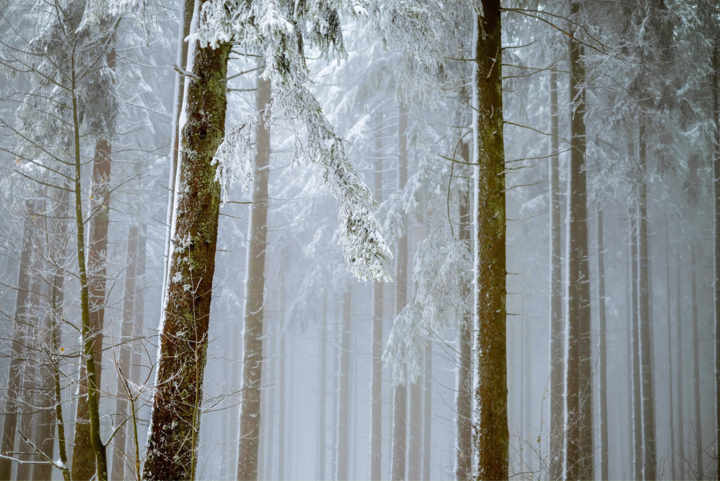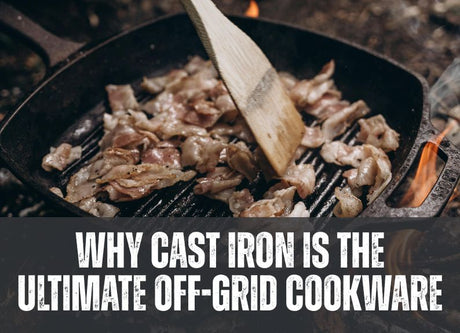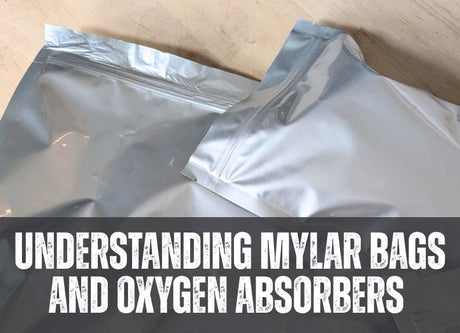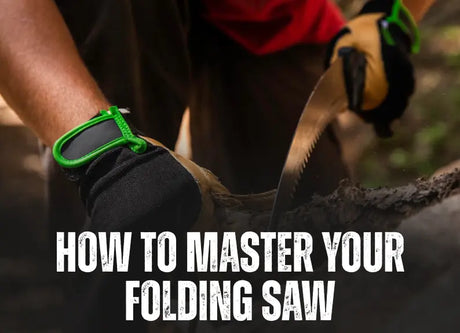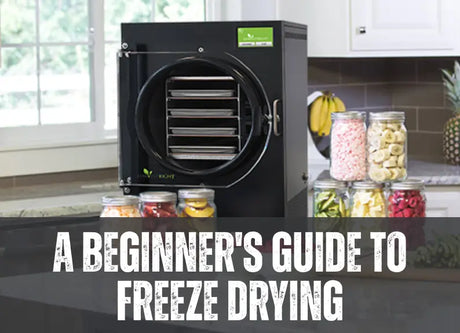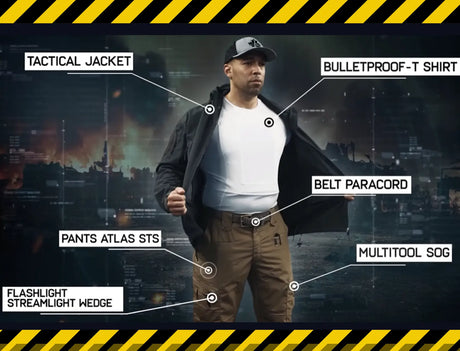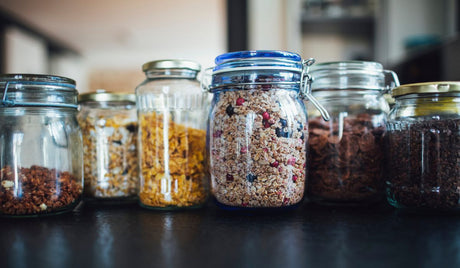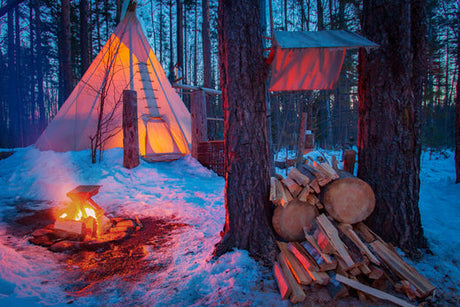If you find yourself in a winter survival situation, it will save your life to be prepared. In this blog, we’re going to discuss the essential items you’ll need whether it’s preparing for a winter bug out situation or you’re just heading out for a long back country camp.
Table of Contents
The Dangers of Winter
In a cold environment like Saskatchewan, the primary challenge in winter is staying warm. At -50°C, a common temperature in our climate, hypothermia can set in within just 5-7 minutes. The number-one threat to your survival in the winter is exposure to the elements. Further, your body will try to use calories to try and drive up the temperature of your body, a process called thermogenesis. The number one goal in these survival scenarios, is to ensure you have a constant source of heat, so you don’t burn through your precious calories.
6 Essentials for Winter Survival
1. Good Clothing
Good clothing can be quite literally be a life or death decision. Here are a few things you need to comfortably survive the cold

Base layers
choose fabrics that wick moisture and provide warmth and comfort. We recommend they be tight fitting and made of either Merino wool or high-performance polyester or polypropylene fabrics.
Winter Boots
Not only should you always opt for an excellent winter boot, but you should also buy them one size larger than normal. This allows for the addition of warm layers while preventing vasoconstriction—which causes your feet to be cold due to constricted blood flow caused by too-tight footwear.
Warm outer layer
We recommend a natural fiber such as down, wool, or leather. These materials are both insulating and long lasting. Ensure that you have a winter jacket is both a windbreaker and waterproof on the outside for extra protection in a number of climates.
Gloves
You’ll need a light pair of gloves for tasks which require dexterity, such as sawing wood, hunting, or preparing meat. A thicker and warmer mitten will be better for overall warmth and for doing anything outdoors for a long time, such as hauling your supply sled. Check out our real fur clothing for some warm options.
2. Tools

Axe
An axe will be one of your most important tools, especially in winter. Fuel for fires will be your number one priority. You might find it handy to carry both an extra axe and a smaller hatchet.
Saw
A saw is a great multi-use tool both for wood cutting and processing game meat into smaller pieces. This is also a great tool to have a spare of in the event of it breaking down. Take a look at our selection of silky saws here.
Knife
Good for both self-defense, and for smaller jobs such as sewing, food preparation, hunting, or even for processing smaller animals such as fish, squirrels, and rabbits. Ensure you choose at least one high quality knife and sharpener for your gear bag.
3. Shelter

You will need a wood-stove compatible tent, like the NorTent lavvo 4 or Gamme 6, if you are going to be in the woods for any long duration of time. In this kind of survival situation a mountaineering style tent, which is designed more for lightweight weekend trips, will simply not cut it! There are a number of options for shelters and tents, from DIY to heavy and semi-permanent.
DIY
From a large, heavy duty tarp, you can build your own hot tent at a very low cost, like our friend Lonny. It is an excellent thing to know how to do in the event you do not have a hot tent available. The other option is to build a lean to, or other natural structure, with added warmth and strength from mylar blankets.
Lightweight sil-nylon tent
The best part about this material is that it is extremely lightweight (the Seek Outside 4 season tent is only 5lbs for example, watch our product review below). These are great nomadic options for all weather conditions.
Heavy Canvas
These durable and semi-permanent structures are really great if you’re heading out for a long period of time, although they come with a bit of extra weight. If you have multiple people and a good sled, you’ll manage just fine with the weight, but if you’re solo camping after a long backpack in, this may not be the best option for you.
4. Wood Stove

This is an essential part of your winter camping, or survival arsenal. In order to conserve calories, it is imperative that you have a warm place to rest, especially in unpredictable or inclement weather.
DIY - How to Make a 'Hobo Stove'
There are a number of DIY options available like using a food or coffee can to make a "hobo stove'. Here's a step by step guide how to make a hobo stove.
Step 1: Prepare the Can
-
Clean the can thoroughly and remove any labels or glue residue.If one end is still sealed (e.g., bottom of a coffee can), leave it intact—this will become the base of your stove.
Step 2: Make the Fuel Door
- On the open end of the can (side without the base), cut a U-shaped flap about 2-3 inches wide and 2 inches tall.
- Use tin snips to cut three sides of the U (leaving the top uncut so it can be bent upwards like a little door).
- This serves as your fuel feed hole where you’ll insert small sticks or twigs.
Step 3: Add Airflow Holes
- Drill or punch holes around the bottom side of the can (near the sealed base) for air intake.
- Then, make several holes around the top of the can for ventilation and chimney effect.
- These holes help create a draft, pulling air through the bottom and up through the flame.
Step 4: Optional Grate Support
- Inside the can, you can add a crossbar or small grate about an inch above the bottom to support your fuel and improve airflow beneath it.
- This helps the fire burn more efficiently.
Step 5: (Optional) Top Grate for Cooking Pot
- If you want to place a pot or pan directly on the stove, place a metal grill or grate across the open top.
- You can also cut four small notches on the top edge of the can to hold skewers or a pot stable.
Titanium
The most expensive option, but well worth it in the weight reduction compared to a similar size wood stove in another material. Titanium stoves also fold down for easy packing.
5. Hunting and Fishing Skills

Ice Fishing
This is a great way to catch your dinner with less effort. You will need a manual auger, tackle, and a rod. The great perk of ice fishing is that you aren’t limited by not having a boat or raft, like in summer.
Bow Hunting
There are two main bow styles, and each has pros and cons. A compound bow is more powerful and more accurate, especially for a beginner, but contains a lot of moving parts that could prove unreliable in the long term. A traditional recurve bow is more difficult for a beginner, but it does provide longevity.
Rifle
Whether you’re chasing a whitetail or searching for a moose, you will find it beneficial to have a rifle with you. If you don’t already have your firearm safety course, you can register here! Read here to learn more about the rifle that will suit your needs best.
6. Snow Travel

Sled
A sled is one of those bonuses of winter camping and survival. A good sled makes it easier to traverse long distances without as much sweat as a wagon or single backpack.
Snow Shoes
Snow Shoes can be your best friend in powder! Don’t expend more energy than you need to, sit on top of the snow and you’ll stay dryer and warmer as well.
Final Thoughts
Check out our inventory of survival food, survival gear, and more. We have everything you need to bug out, camp, head into the backcountry, or prepare for an emergency. You can learn much more about winter survival, gear reviews, and more prepper essentials on our Youtube Channel. We have everything you need in order to get out, and survive!

